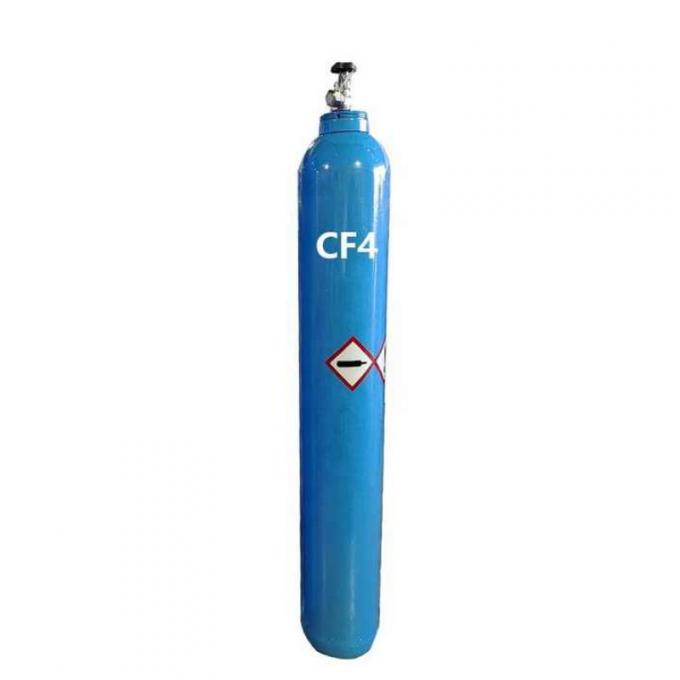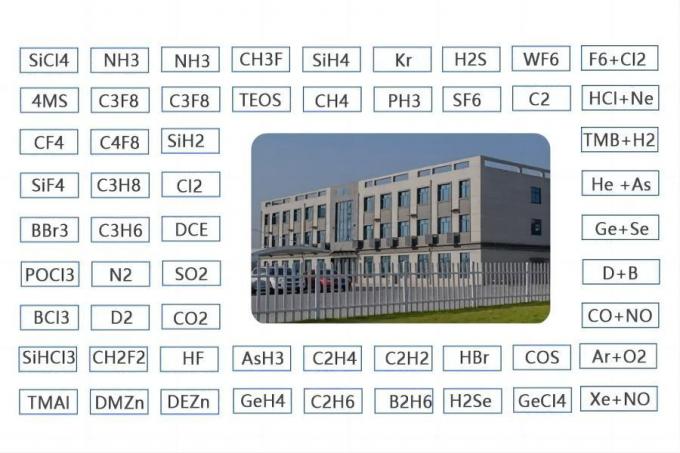


| MOQ: | 1kg |
| Price: | US $150/kg |
| Standard Packaging: | Cylinder/Tank |
| Delivery Period: | 30 days |
| Payment Method: | T/T |
| Supply Capacity: | 200 Tons/Year |
Trifluoromethane, also known as carbon trifluoride or Freon-23, is a hydrofluorocarbon (HFC) compound with the chemical formula CF3H. It consists of one carbon atom bonded to three fluorine atoms. Trifluoromethane is a colorless, odorless gas at room temperature and pressure.
Here are some key points about trifluoromethane:
Uses: Trifluoromethane has various applications due to its unique properties. It is commonly used as a refrigerant in commercial and industrial cooling systems, including air conditioning equipment and refrigerators.
Environmental Impact: Trifluoromethane is classified as a greenhouse gas and contributes to global warming. It has a high global warming potential (GWP), which means it has a much greater impact on climate change compared to carbon dioxide (CO2). Therefore, efforts have been made to reduce the use of trifluoromethane and replace it with alternative refrigerants with lower environmental impact.
Safety: Trifluoromethane is considered non-toxic and does not pose significant health risks when handled properly. However, it is important to follow safety guidelines and use appropriate protective equipment when working with this gas, as high concentrations in confined spaces can displace oxygen and cause asphyxiation.
Chemical Properties: Trifluoromethane is chemically stable and non-flammable under normal conditions. It has a boiling point of -82.2°C (-116°F) and a melting point of -150.8°C (-239.4°F). It is not soluble in water but can dissolve in some organic solvents.
Industrial Production: Trifluoromethane is primarily produced by the reaction of chloroform (CHCl3) with hydrogen fluoride (HF) in the presence of a catalyst. The reaction results in the substitution of chlorine atoms in chloroform with fluorine atoms, leading to the formation of trifluoromethane.
It's worth noting that regulations and environmental concerns surrounding the use of hydrofluorocarbons, including trifluoromethane, continue to evolve. The phase-out of certain refrigerants is being implemented in many countries to mitigate their impact on climate change, and alternative refrigerants with lower GWPs are being developed and adopted.
| Product Name | Trifluoromethane | Chemical Formula | CHF3 | |
| Hazard Class | 2.2 | Molecular Weight | 70.014 | |
| CAS | 75-46-7 | UN | 1984 | |
| Boiling Point | at 1.013 bar [ºC] | -82.16 | at 14.5 psi,[ºF] | -115.87 |
| Density | at 1.013 bar,15ºC,[kg/m³] | 2.986 | at 1 atm., 70ºF,[lb/ft³] | 0.182 |






| MOQ: | 1kg |
| Price: | US $150/kg |
| Standard Packaging: | Cylinder/Tank |
| Delivery Period: | 30 days |
| Payment Method: | T/T |
| Supply Capacity: | 200 Tons/Year |
Trifluoromethane, also known as carbon trifluoride or Freon-23, is a hydrofluorocarbon (HFC) compound with the chemical formula CF3H. It consists of one carbon atom bonded to three fluorine atoms. Trifluoromethane is a colorless, odorless gas at room temperature and pressure.
Here are some key points about trifluoromethane:
Uses: Trifluoromethane has various applications due to its unique properties. It is commonly used as a refrigerant in commercial and industrial cooling systems, including air conditioning equipment and refrigerators.
Environmental Impact: Trifluoromethane is classified as a greenhouse gas and contributes to global warming. It has a high global warming potential (GWP), which means it has a much greater impact on climate change compared to carbon dioxide (CO2). Therefore, efforts have been made to reduce the use of trifluoromethane and replace it with alternative refrigerants with lower environmental impact.
Safety: Trifluoromethane is considered non-toxic and does not pose significant health risks when handled properly. However, it is important to follow safety guidelines and use appropriate protective equipment when working with this gas, as high concentrations in confined spaces can displace oxygen and cause asphyxiation.
Chemical Properties: Trifluoromethane is chemically stable and non-flammable under normal conditions. It has a boiling point of -82.2°C (-116°F) and a melting point of -150.8°C (-239.4°F). It is not soluble in water but can dissolve in some organic solvents.
Industrial Production: Trifluoromethane is primarily produced by the reaction of chloroform (CHCl3) with hydrogen fluoride (HF) in the presence of a catalyst. The reaction results in the substitution of chlorine atoms in chloroform with fluorine atoms, leading to the formation of trifluoromethane.
It's worth noting that regulations and environmental concerns surrounding the use of hydrofluorocarbons, including trifluoromethane, continue to evolve. The phase-out of certain refrigerants is being implemented in many countries to mitigate their impact on climate change, and alternative refrigerants with lower GWPs are being developed and adopted.
| Product Name | Trifluoromethane | Chemical Formula | CHF3 | |
| Hazard Class | 2.2 | Molecular Weight | 70.014 | |
| CAS | 75-46-7 | UN | 1984 | |
| Boiling Point | at 1.013 bar [ºC] | -82.16 | at 14.5 psi,[ºF] | -115.87 |
| Density | at 1.013 bar,15ºC,[kg/m³] | 2.986 | at 1 atm., 70ºF,[lb/ft³] | 0.182 |




